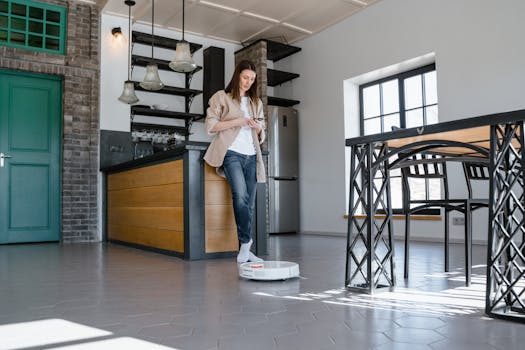
Smart Homes and Smart Living: The Technological Transformation of European Homes by 2025
Smart Homes and Smart Living is revolutionizing the way we live in our homes. With the increasing use of technology and the Internet of Things (IoT), European homes are becoming more efficient, sustainable, and connected. By 2025, we can expect to see significant advancements in home automation, energy management, and data analytics, making our lives easier, more convenient, and more enjoyable.
Introduction to Smart Homes
A smart home is a residence that has been equipped with advanced technology and devices to make our lives more comfortable, convenient, and sustainable. These devices can be controlled remotely through a smartphone or voice assistant, allowing us to monitor and manage our home’s systems, including lighting, temperature, security, and entertainment. The concept of smart homes has been around for several years, but it’s only recently that the technology has become more affordable and accessible to the masses.
Key Features of Smart Homes
So, what makes a home smart? Some of the key features of smart homes include:
- Home automation systems that can control lighting, temperature, and security
- Energy management systems that can monitor and optimize energy consumption
- Smart appliances that can be controlled remotely and optimized for energy efficiency
- Voice assistants and smart speakers that can control multiple devices and provide information
- Advanced security systems that include cameras, motion sensors, and door locks
Benefits of Smart Homes
The benefits of smart homes are numerous. Some of the most significant advantages include:
- Increased energy efficiency and reduced energy bills
- Improved home security and safety
- Enhanced convenience and comfort
- Increased property value
- Improved health and wellbeing through air quality monitoring and purification
Challenges and Limitations of Smart Homes
While smart homes offer many benefits, there are also some challenges and limitations to consider. Some of the most significant concerns include:
- High upfront costs and investment
- Complexity and difficulty in setting up and integrating devices
- Security risks and vulnerability to hacking
- Dependence on technology and potential for technical failures
- Environmental impact and e-waste generation
Future of Smart Homes in Europe by 2025
By 2025, we can expect to see significant advancements in smart home technology. Some of the trends and developments to watch out for include:
- Increased adoption of voice assistants and smart speakers
- Greater emphasis on energy efficiency and sustainability
- More advanced security systems and biometric authentication
- Increased use of artificial intelligence and machine learning
- Greater integration with other smart devices and systems, such as cars and wearables






